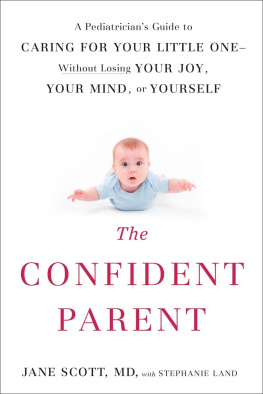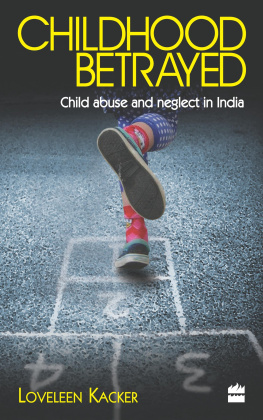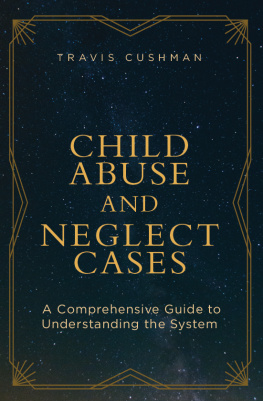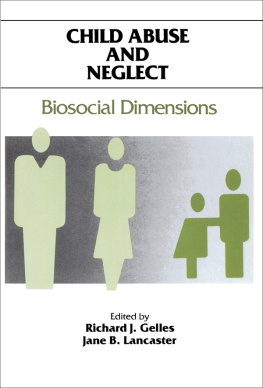
Recognizing and Helping
the Neglected Child
Safeguarding Children Across Services
Series editors: Carolyn Davies and Harriet Ward
Safeguarding children from abuse is of paramount importance. This series communicates messages for practice from an extensive government-funded research programme designed to improve early recognition of child abuse as well as service responses and interventions. The series addresses a range of forms of abuse, including emotional and physical abuse and neglect, and outlines strategies for effective interagency collaboration, successful intervention and best practice. Titles in the series will be essential reading for practitioners with responsibility for safeguarding children.
Carolyn Davies is Research Advisor at Thomas Coram Research Unit at Institute of Education, University of London.
Harriet Ward is Director of the Centre for Child and Family Research and Research Professor at Loughborough University.
other books in the series
Effective Working with Neglected Children and their Families
Linking Interventions to Long term Outcomes
Elaine Farmer and Eleanor Lutman
ISBN 978 1 84905 288 7
eISBN 978 0 85700 609 7
Safeguarding Babies and Very Young Children from Abuse and Neglect
Safeguarding Babies and Very Young Children from Abuse and Neglect
Harriet Ward, Rebecca Brown and David Westlake
ISBN 978 1 84905 237 5
eISBN 978 0 85700 481 9
Safeguarding Children from Emotional Maltreatment
What Works
Jane Barlow and Anita Schrader McMillan
ISBN 978 1 84905 053 1
eISBN 978 0 85700 364 5
Caring for Abused and Neglected Children
Making the Right Decisions for Long-Term Care or Reunification
Jim Wade, Nina Biehal, Nicola Farrelly and Ian Sinclair
ISBN 978 1 84905 207 8
eISBN 978 0 85700 441 3
Adolescent Neglect
Research, Policy and Practice
Gwyther Rees, Mike Stein, Leslie Hicks and Sarah Gorin
ISBN 978 1 84905 104 0
eISBN 978 0 85700 280 8
Safeguarding Children Across Services
Messages from Research
Carolyn Davies and Harriet Ward
ISBN 978 1 84905 124 8
eISBN 978 0 85700 290 7
Safeguarding Children
Across Services
Recognizing and Helping the Neglected Child
Evidence-Based Practice for Assessment and Intervention
Brigid Daniel, Julie Taylor and Jane Scott with David Derbyshire and Deanna Neilson
Foreword by Enid Hendry

Jessica Kingsley Publishers
London and Philadelphia
Figure 4.2 from Scottish Executive 2005 in Chapter 4 is reproduced by permission of the Controller of HMSO and the Queens Printer for Scotland.
First published in 2011
by Jessica Kingsley Publishers
73 Collier Street
London N1 9BE, UK
and
400 Market Street, Suite 400
Philadelphia, PA 19106, USA
www.jkp.com
Copyright Brigid Daniel, Julie Taylor and Jane Scott 2011
Foreword copyright Enid Hendry 2011
All rights reserved. No part of this publication may be reproduced in any material form
(including photocopying or storing it in any medium by electronic means and whether or not
transiently or incidentally to some other use of this publication) without the written permission
of the copyright owner except in accordance with the provisions of the Copyright, Designs and
Patents Act 1988 or under the terms of a licence issued by the Copyright Licensing Agency
Ltd, Saffron House, 610 Kirby Street, London EC1N 8TS. Applications for the copyright
owners written permission to reproduce any part of this publication should be addressed to the
publisher.
Warning: The doing of an unauthorized act in relation to a copyright work may result in both a civil claim for damages and criminal prosecution.
Library of Congress Cataloging in Publication Data
Recognizing and helping the neglected child : evidence-based practice for
assessment and intervention / Brigid Daniel ... [et al.] ; foreword by Enid
Hendry.
p. cm.
Includes bibliographical references and index.
ISBN 978-1-84905-093-7 (alk. paper)
1. Child welfare. 2. Child abuse. 3. Social work with children. 4. Children--Services for. I. Daniel, Brigid, 1959
HV713.R434 2011
362.76532--dc23
2011021208
British Library Cataloguing in Publication Data
A CIP catalogue record for this book is available from the British Library
ISBN 978 1 84905 093 7
eISBN 978 0 85700 274 7
Contents
List of Tables and Figures
Acknowledgements
The systematic literature that formed the basis for much of this book was funded by the Department of Health and the Department of Children, Schools and Families (now Department for Education) as part of the Safeguarding Children Research Initiative.
We are grateful to the practitioners who contributed the case study material that has helped us to illustrate the realities of practice with neglected children and provided a window into the creative and effective work that is being undertaken across the UK on behalf of neglected children.
We thank Mike Stein for permission to reproduce the material from Hicks and Stein (2010) as .
The views expressed in this book are the authors and do not necessarily reflect those of the Department of Health or the Department for Education.
Foreword
Neglected children remain under the radar of professional awareness for too long, and outside the circle of protective intervention. (p.147)
The long-term effects of neglect are profoundly harmful and on far too many occasions fatal. While other forms of maltreatment appear to be reducing in frequency, the incidence of neglect has increased and now constitutes the majority of cases of significant harm. For practitioners it can be one of the most challenging, frustrating and dispiriting areas of practice. For all these reasons this book is a most welcome and timely addition to the literature on child neglect. The authors write with assurance and understanding, recognizing how emotionally draining and professionally demanding the work can be; they also offer a challenge to current thinking and practice.
This is a must-read book for all those whose work brings them in contact with neglected children, for their managers and those responsible for their training and education, for three main reasons. First it provides a succinct and authoritative synthesis of research, drawing on a systematic review of evidence on recognizing neglect. I found the distinction made between a broad definition of neglect and a narrow operational or professional definition of neglect made sense, as did the authors recommendation that, instead of getting unduly hung up on definitions, we should accept neglect as a fluid concept.
Second, the authors challenge the reader to reflect on their practice, values and ways of thinking about neglect and neglecting parents. I particularly like the authors challenge to the notion of hard to reach and hard to change families, which they suggest we reframe in terms of hard to access and hard to use services. I was struck by their observation that the general public are at least as well equipped as professionals to recognize neglectful care, if not more so, and of the need to hear and act on the concerns of the wider community. They suggest it may not be that practitioners are failing to notice, rather that they are unsure or reluctant to act. There is a world of difference, they say, between noticing and responding.
Next page








